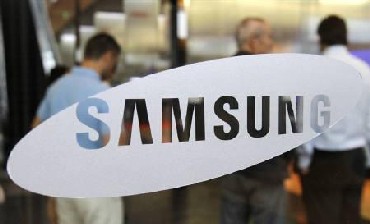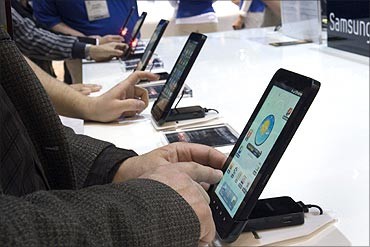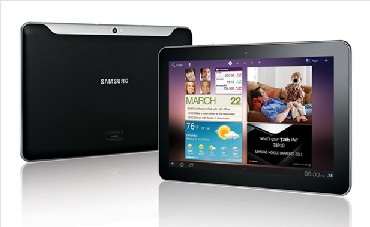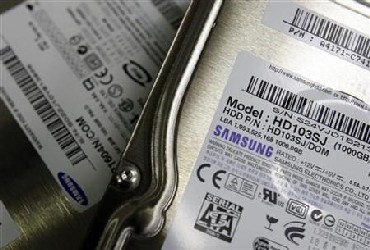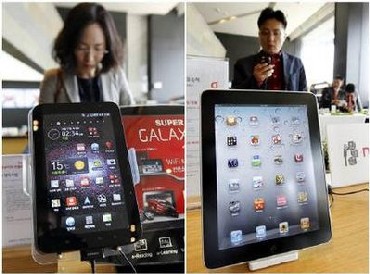 | « Back to article | Print this article |
How Samsung is making it big in India
Samsung has a clear view of how it can reach the No.1 slot in the Indian smartphone market:
Samsung Electronics launched its smartphone platform "bada" in India at the Global Developer Day organised by the company in June 2010 in Bangalore. The India event was preceded by a Global Developer Day in Seoul in March 2010 and was followed by similar events in the UK and US.
In October 2010, Samsung launched its first tablet device, the Samsung Galaxy Tab, in India, the first three markets in the world where the tablet PC was unveiled.
The company opened its smartphone account in India in June 2010 with Galaxy S and Wave, and now has 12 smartphones on almost all the popular platforms Android, Windows its own "bada". The idea, says Samsung, is to "democratise the smartphone experience".
In all, Samsung has over 50 models in India from entry level to mid-range to high-end, including smartphones.
Click NEXT to read more...
How Samsung is making it big in India
Get the drift? India, the world's second-largest mobile phone market after China, is key to Samsung's growth and it will do everything it takes to tap the next big opportunity here - the smartphone market. "bada", meaning "ocean" in Korean, will be a pivot in realising Samsung's vision of a 'smartphone for everyone.'
"We have the potential to reach the No.1 position in numerous categories in a country like India where markets are maturing and the potential for growth is unlimited," said JS Shin, president of Samsung Electronics Southwest Asia, while unveiling its new mobile devices at the company's recent Southwest Asia regional forum.
In India, as well as in other markets, Samsung's telecom vertical will be largely driven by two key factors - touchscreens and smartphones - in 2011.
"Our current market share (in mobile phones in India) as per GFK Nielsen stands at around 23.4 per cent in value, and by the end of this year, the target is to reach 40 per cent," asserts Ranjit Yadav, country head, Samsung Mobile and IT, Samsung India.
Click NEXT to read more...
How Samsung is making it big in India
Anshul Gupta, analyst with technology research company Gartner, points out, "You cannot afford to ignore India which is likely to contribute approximately 13 per cent to the worldwide handset market."
Gupta believes that the Indian mobile device market will grow at over 16 per cent year-on-year, while the smartphone market will grow at over 50 per cent y-o-y for next two years.
Last year, as per a GFK Nielsen report, the total mobile market in India was around 135 million units.
Click NEXT to read more...
How Samsung is making it big in India
Mobilising the masses
Samsung's India story started in 2007 with the launch of entry level Guru series of mobile phones.
Prices starting at Rs 1,400 and features such as long battery life, powerful camera, music capabilities, and dual-SIM played a critical role in taking the brand to the masses.
The company even got leading Bollywood actor Aamir Khan to endorse the series.
Today, as consumer demand for more capable devices accelerate, Samsung is playing smart by offering products at punchy price points.
Says Dipesh Shah, vice-president, Samsung India Software Operations (SISO), "bada will offer features similar to a smartphone operating system (OS) but at a cheaper price to a new target audience which is moving from feature phones to smartphones. That's what the emerging markets need in the near future - affordable handsets - and we will give them customised apps on affordable smartphones."
Click NEXT to read more...
How Samsung is making it big in India
Yadav is well aware that growth in the Indian mobile handset market is likely to be driven by the replacement handset market rather than new user additions.
To put it in perspective, the replacement market is expected to grow from 118 million handsets for the 12-month period ended December 31, 2010, constituting 62.8 per cent of overall Indian mobile handset market, to 359 million handsets for the 12-month period ending December 31, 2014, constituting 89.3 per cent of overall Indian mobile handset market, as per Analysys Mason data.
Samsung, therefore, is keen to double its volumes in the smartphone sector - where it hardly figured before 2010 - and will ship about 50 million units worldwide this year.
Samsung is building devices that will differentiate themselves with features like support for DLNA that allow its phones to interact with home networks.
Click NEXT to read more...
How Samsung is making it big in India
More importantly, its entire smartphone line-up ranges from sub-Rs 10,000 to around Rs 32,000 with each handset offering the key features of the platform it operates on.
"The main differentiation, though, will come from better touch technology, better user interfaces and a focus on the lifestyle segment," Shin says.
Samsung's touchscreen focus comes at a time when the market for touchscreen phones is getting increasingly competitive.
Says Yadav, "Other manufacturers only have one or two touchscreen devices, but we are coming onto the market with at least 12-15 smartphone devices mainly sporting the touchscreen," he claims.
The shift in the domestic smartphone market - expected to be around 4 per cent of the total handset market - is already visible.
Purushothaman KG, director of Protiviti Consulting, remarks, "Potential smartphone consumers are price conscious and subsidisation of the devices would be critical. 3G services offered by smartphone providers are expected to give an additional impetus."
Click NEXT to read more...
How Samsung is making it big in India
Samsung is not in the race to compete with Indian handset vendors who operate at the lower end of the market, says Rahul Gupta, analyst, Strategy Analytics. He believes that Samsung is in a better position to pose threat to top tier handset manufacturers.
"The growth of Samsung in India will be at the expense of Nokia and Sony Ericsson," Gupta notes.
If Samsung succeeds in selling more than 50 million smartphone units running Android, Windows Phone 7 and its own bada OS in 2011 as projected, it could bring the company's high-end market share closer to the levels to which it is accustomed to in the overall phone space.
Globally too, it could displace Research in Motion (RIM) and even threaten Apple and Nokia.
Mind you, competition isn't sitting idle. LG, for instance, is trying to beef up its smartphone line-up significantly.
It has made a good showing with its new mid-priced Optimus One and has announced its own target: To double global smartphone shipments to 15 million units this year, while seeing 20 per cent growth in mobile phones overall in India.
Click NEXT to read more...
How Samsung is making it big in India
Innovate, innovate, innovate
Samsung leapt early into the Android tablet space, even though the Google OS was not fully ready for larger screen devices; so its Galaxy Tab was something of a compromise gadget, mostly designed to give a head start.
Yet the product sold over one million units worldwide and more impact is expected once Samsung launches the 10-inch form factor, with the new Android Honeycomb release and video capabilities next month, to compete more closely with the Apple iPad.
Yadav says, "We will launch the 10-inch tablet PC at around Rs 35,000 and the 8-inch device will be priced around Rs 28,000. While the tablet PC market today stands at around 25,000 units a quarter, we expect it to grow exponentially here on."
Introducing innovative products in the global and Indian market warrants relentless focus on R&D and Samsung isn't skimping.
Click NEXT to read more...
How Samsung is making it big in India
The company spends over 9 per cent of its global spends in R&D every year. The company has a team of 3,000-odd engineers across its two R&D facilities in India customising its smartphones, tablet PCs, fine-tuning Samsung's mobile operating system, creating apps for Indian users.
The reliance of Samsung on its open source mobile OS, bada, comes through when Dipesh Shah outlines what his team is doing at the company's research labs.
Samsung has two software development centres - Samsung India Software Centre (SISC) and SISO at Noida (Uttar Pradesh) and Bangalore respectively.
The latter is already working on far advanced technologies like 4G. In fact, the mobile communication team at SISO is in advanced stages of developing devices on cutting edge technology including LTE, HTML5, Android OS for tablets and dolphin browsers for smartphones.
The Bangalore R&D centre of the company has collaborated on global projects and developed a dongle for 4G mobiles that has been launched in Norway, Sweden and Finland.
Click NEXT to read more...
How Samsung is making it big in India
Design and innovation are two key focus areas for Samsung to deliver products with unique user experience. "In fact, India is among the only four markets globally to have a specialised and dedicated product innovation team outside the US, UK and China," Shah informs.
Shah, who is working with around 800 application developers in the country to develop applications for the Indian consumer, adds that almost 3 million downloads of bada have been made from India so far.
"SISO is driving new technologies in internet browsing on smartphones by adding features like HTML5, inline video, web-to-native interaction and to connect high performance graphics engine to enhance the web gaming experience," Shah lists.
Other major technologies the centre is working on are voice over IP for the LTE platform, 3D video capability on mobile devices and full HD (1080p) recording and playback on handsets.
Click NEXT to read more...
How Samsung is making it big in India
Best foot forward
The company's Indian manufacturing facilities - Chennai and Noida - are producing around a million units of mobiles per month.
The company plans to manufacture smartphones in India, besides the entry level Guru series that it manufactures currently, but Yadav refuses to put a date on it.
"We have been thinking about expanding our manufacturing capacity by making smartphones in India, but we haven't got everything worked out yet," he says.
Armed with 12 smartphone models for the Indian market - including the recently launched Galaxy Ace, Pop and Fit models - across price points, Samsung is strengthening its offering and will selectively market devices in the urban markets and in the hinterlands.
Click NEXT to read more...
How Samsung is making it big in India
"It is critical that feature phones reach their target customers on time while smartphones need to be promoted in metros and tier-1 towns. Distribution is everything in our business," says Yadav.
Another area of focus for Samsung will be the enterprise segment. While executives at Samsung would not say this aloud, the company clearly failed to anticipate the enterprise demand for QWERTY devices - an opportunity that RIM cashed on with its BlackBerry.
But Yadav and his team hope to stage a comeback in the segment. He asserts, "We have seen growing interest of corporations and larger enterprises for our tablet PCs and Galaxy smartphones. Our customers are asking us to develop apps for enterprises that will enable customisation and add a layer of security to the devices. We expect many more Indian enterprises, both large and small, to convert their workers to tablet PC this year."
Click NEXT to read more...
How Samsung is making it big in India
Gupta of Strategy Analytics sees sense in Samsung's approach. "The tablet PC market is niche in country like India but if Samsung positions its product well, it can be successful.
So far the Galaxy family has done well in all markets. It definitely helped Samsung getting mindshare of high ARPU subscribers."
Analysts feel that Samsung has timed the launch of its tablet PCs well as the awareness about Apple iPads gathers steam in India and non-availability of latest iPads drive potential buyers to Samsung store fronts.
All said, putting bada devices out won't exactly be a cakewalk for Samsung. Yadav and Shah agree that a big challenge for bada is that its app ecosystem may not be strong enough to compete with Android and Apple's app store.
Click NEXT to read more...
How Samsung is making it big in India
Again, the pricing of bada as an OS may render it uncompetitive when compared with S40, Symbian, Microsoft or Android at the lower tiers in emerging markets like India.
"The awareness of the bada brand is still very low among consumers in all the major markets; it is at a level similar to Nokia's open source OS, Meego," points out Gupta of Strategy Analytics.
"Also bada has relatively limited developer support in the influential US market." The OS's modest installed base of approximately 8 million handsets worldwide (as of March 2011) is also not large enough to excite developers or media companies.
What may work in Samsung's favour is the fact that the bada phone models have so far been priced relatively competitively, bringing to users smartphone-like functions at lower price points.
And that's what Samsung is stressing right now: Affordability to "democratise" the whole smartphone experience.
Click NEXT to read more...
How Samsung is making it big in India
Last month, Apple announced that it is suing Samsung for anti-competition breaches. Apple alleged that the South Korean company's Galaxy phones and tablets, as well as other Samsung smartphones, imitate the user interface and design features of Apple's iPhones and iPads.
In an earnings call with investors, Apple's chief operating officer, Tim Cook, tried a balanced approach while talking about Samsung, which supplies microchips for the iPhone and iPad.
"I expect strong relationship to continue," he said, but added, "We feel the mobile division of Samsung had crossed the line After trying for some time to work through the issue, we decided to rely on the courts."
Click NEXT to read more...
How Samsung is making it big in India
Samsung, the fastest growing smartphone maker that has also emerged as Apple's strongest competitor, has retaliated. It filed lawsuits against Apple in three countries accusing it of infringing Samsung's patents for reducing power consumption and interruptions during data transmission.
The battle gained momentum just ahead of Samsung launching a new variant of the Galaxy S smartphone in Korea, which is expected to play a key role in Samsung's bid to meet its target of 60 million units of smartphone sales this year.
If we look at the big picture, Samsung is locked in a grim battle for shares with Apple, HTC, Dell, Nokia, Motorola and Research in Motion. And operating systems have emerged as the key differentiator for dominance of the world's smartphone market.
While Apple has a dominant share in the world smartphone market, in India it still doesn't have much of a presence in the segment. Market estimates put Apple's share in this market at less than 1 per cent.






